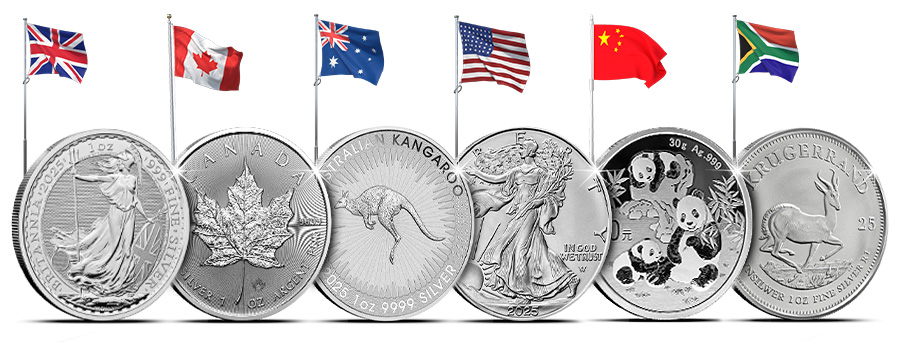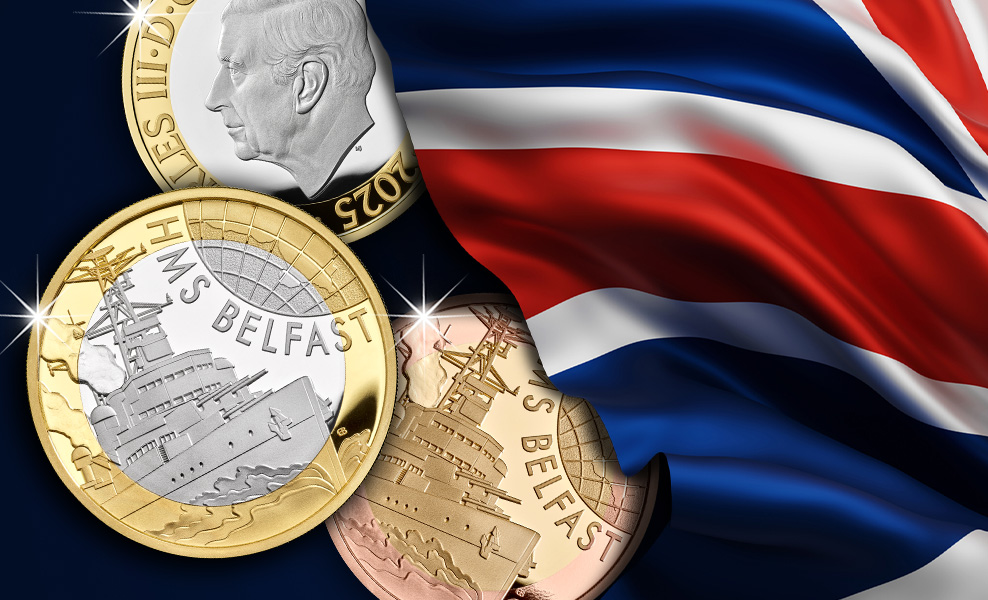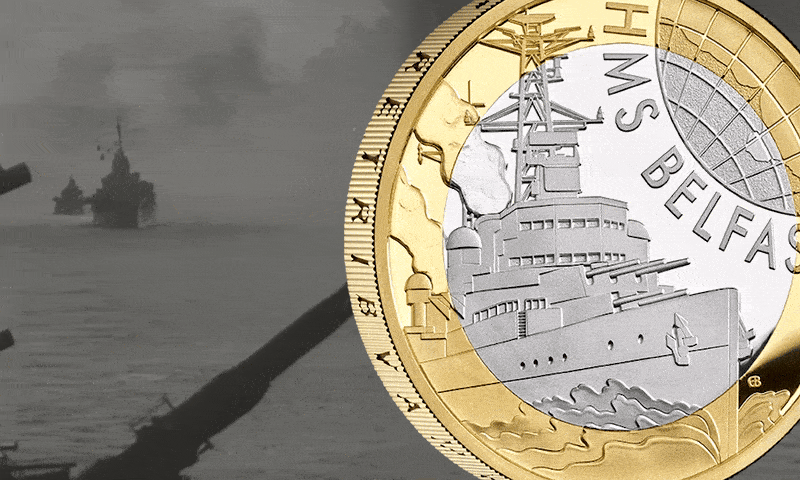Information
Discover the 2025 Annual Sets
As we welcome 2025, there’s no better way to mark the occasion than with The official brand new 2025 Annual Sets — a stunning collection of coins celebrating the people, places, and events that have shaped British history. Each coin captures a defining moment, bringing history to life in a way that feels more meaningful than ever at this time of year.
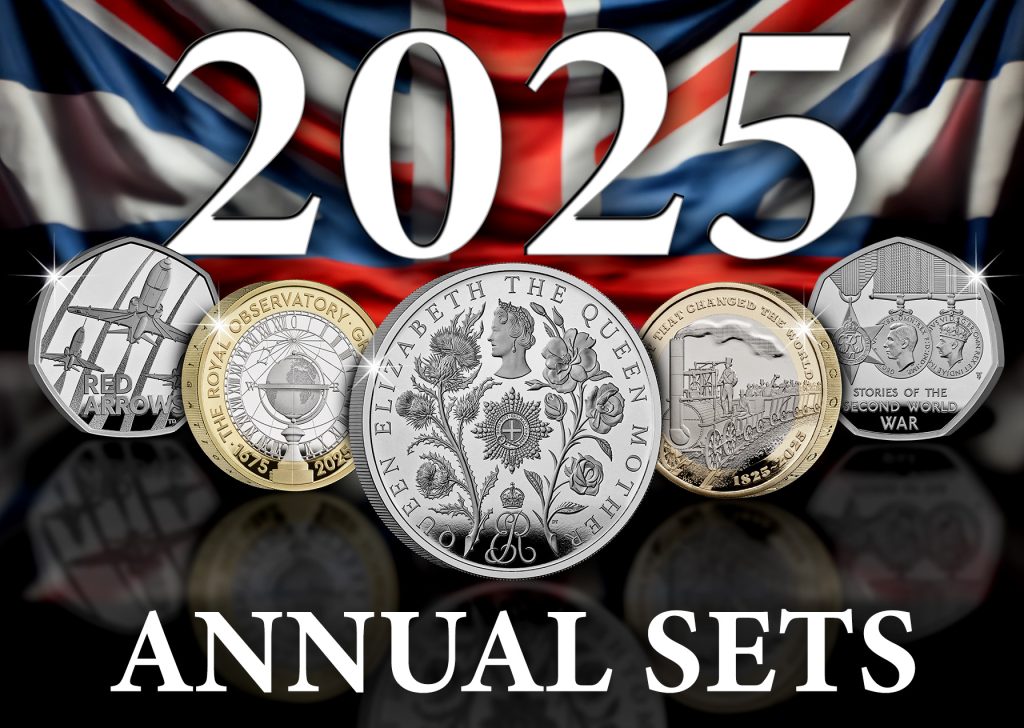
Available on 2nd January 2025
Here’s a closer look at the stories behind these commemorative coins:
Marking the Birth of Queen Elizabeth The Queen Mother
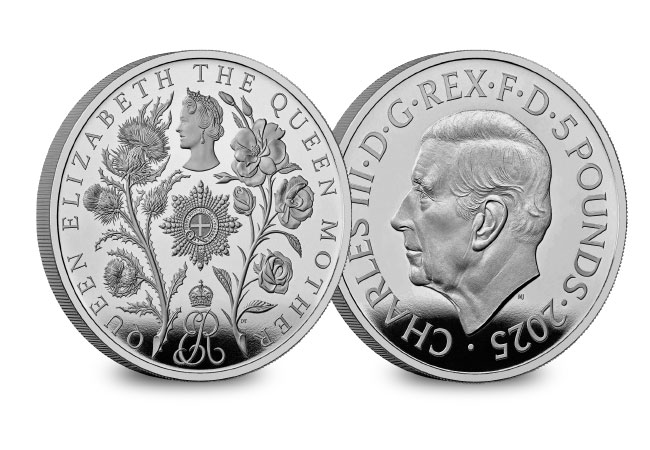
Queen Elizabeth The Queen Mother is celebrated for her steadfast resilience and unwavering support during some of the most challenging times in British history, including the Second World War. As a pillar of strength to her husband, George VI, and her daughter, Queen Elizabeth II, her influence spanned over a century. The £5 coin dedicated to her features a reverse design with a portrait that previously graced the coin celebrating her 80th birthday in 1980—a timeless tribute to her enduring legacy.
200 Years of the Modern Railway
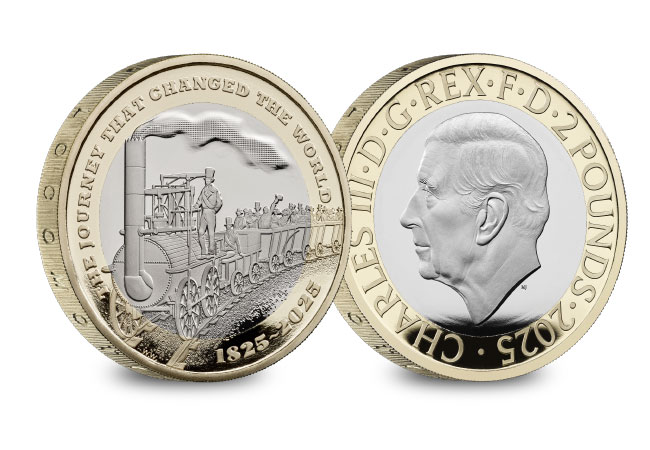
On 27 September 1825, George Stephenson’s Locomotion No. 1 revolutionised travel by transporting hundreds of passengers between Shildon, Darlington, and Stockton. This historic journey not only marked the dawn of the railway age but also transformed industries and cultures worldwide. The £2 coin commemorating this milestone captures the essence of that pivotal moment with a reverse design depicting Locomotion No. 1, paired with the edge inscription, “ACTIVE · LOCOMOTION NO 1.” This coin serves as a tribute to two centuries of innovation and progress in rail travel.
350 Years of The Royal Observatory, Greenwich
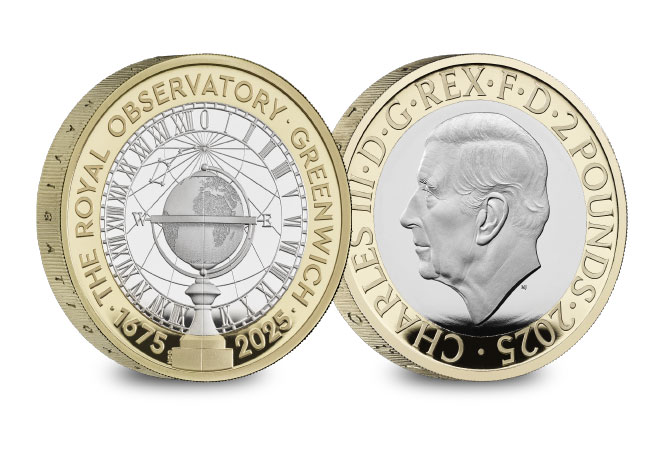
Founded in 1675 by Charles II, the Royal Observatory, Greenwich, has been a beacon of scientific progress, defining global navigation and timekeeping. The £2 coin commemorates its 350th anniversary with a reverse design that integrates the Shepherd Gate Clock, the constellation Ursa Minor, Polaris, and the iconic meridian line against a globe backdrop. Its edge inscription, “PERFECTING THE ART OF NAVIGATION,” underscores the Observatory’s enduring legacy.
Celebrating the Red Arrows
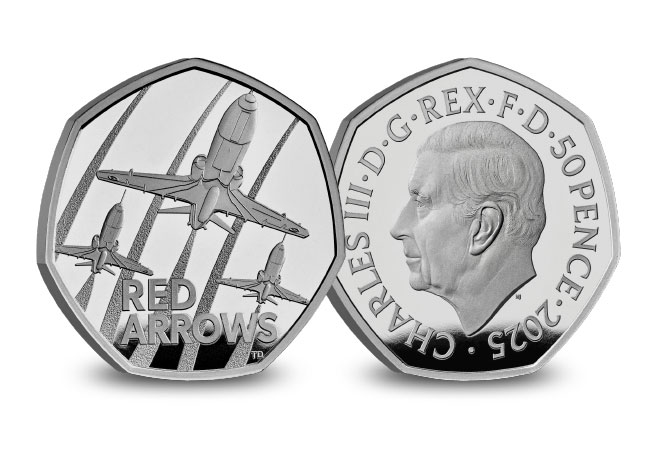
Since their inception in 1964, the Red Arrows have dazzled millions with their breath-taking aerobatic displays. Representing the precision and agility of the Royal Air Force, the team has performed nearly 5,000 displays across 57 countries. The 50p coin celebrating the Red Arrows features the sleek Hawk T1 aircraft, a tribute to the team’s inspiring legacy and their continued excellence in aviation.
Remembering the Stories of the Second World War

The Second World War was a defining chapter in British history, with contributions from soldiers, factory workers, and citizens alike. The 50p coin honours this collective effort with a reverse design showcasing the 1939–45 Star, Defence Medal, and War Medal—symbols of the bravery and resilience demonstrated during the war. Each medal tells a story of personal sacrifice and national unity that shaped the Britain we know today.
The Obverse: His Majesty King Charles III
Every coin in the 2025 Annual Sets bears the official coinage portrait of His Majesty King Charles III. Designed by Martin Jennings in 2022, this is the first definitive coinage portrait of
His Majesty The King to appear on coins, symbolising the continuity of the monarchy and the evolving story of the United Kingdom.
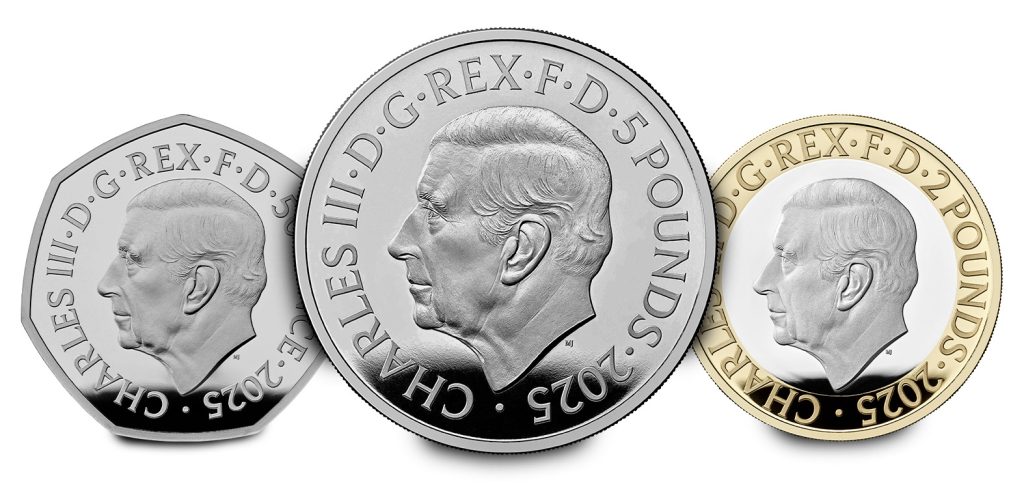
A Testament to British History and Craftsmanship
Each coin is meticulously crafted, embodying The Royal Mint’s dedication to excellence and storytelling. These sets not only celebrate the past but also inspire future generations to cherish and learn from Britain’s rich cultural heritage.
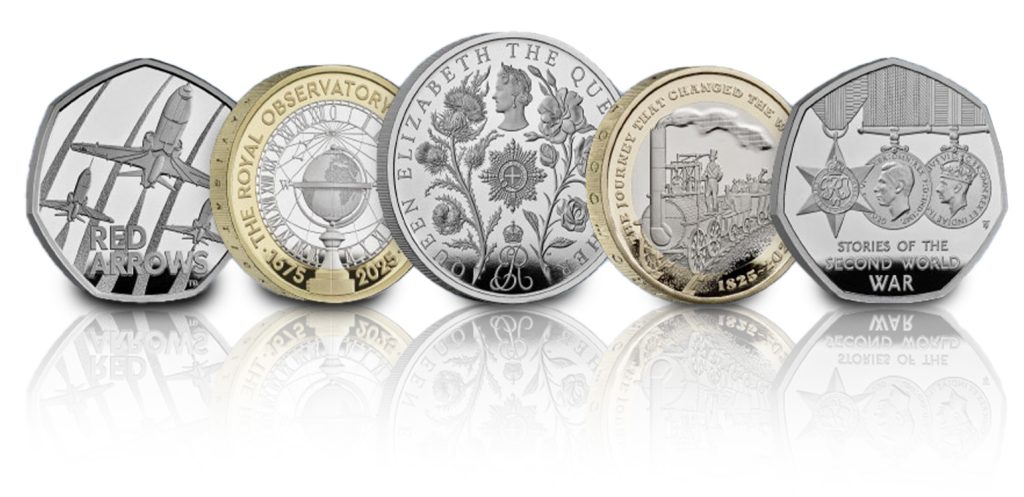
Available on 2nd January 2025
As stated by the Royal Mint
2025 Silver Flagship Coins of the World
The world of coin collecting is about to shine brighter than ever with the release of the 2025 Silver Flagship Coins of the World Collection. These iconic 1oz Silver Bullion coins represent the pinnacle of global minting excellence and offer collectors an exclusive opportunity to secure six of the most significant and sought-after coins of the year.
A Celebration of Silver Excellence
For centuries, silver coins have captured the imagination of collectors and investors alike. This new 2025 limited-edition set of six flagship coins, each represents the craftsmanship and heritage of the world’s leading mints.
From the historic South African Krugerrand to the charming Chinese Panda, this collection unites diverse designs and cultural icons, creating a truly global tribute to silver bullion.
The 2025 Collection: Coin by Coin
1. Britain’s Britannia
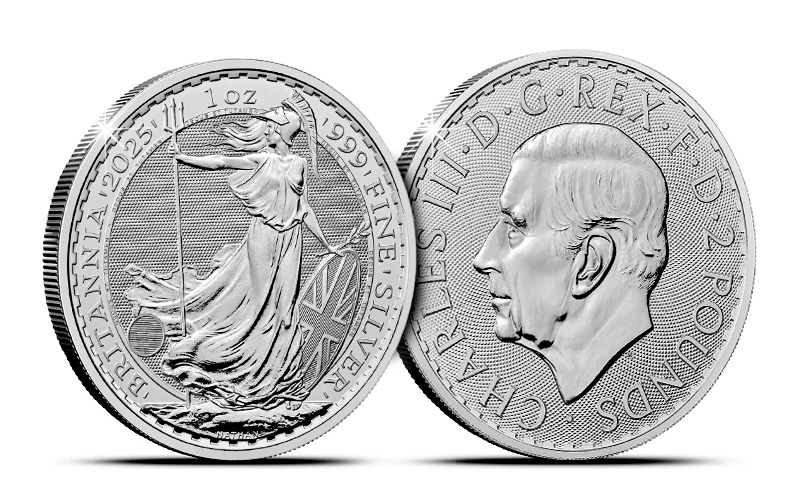
The Britannia stands as a symbol of British resilience and artistry. For 2025, it features the elegant depiction of Britannia on the reverse and the official portrait of King Charles III on the obverse, making it a must-have for collectors commemorating this new royal era.
2. FIRST King Charles III Canadian Maple Leaf
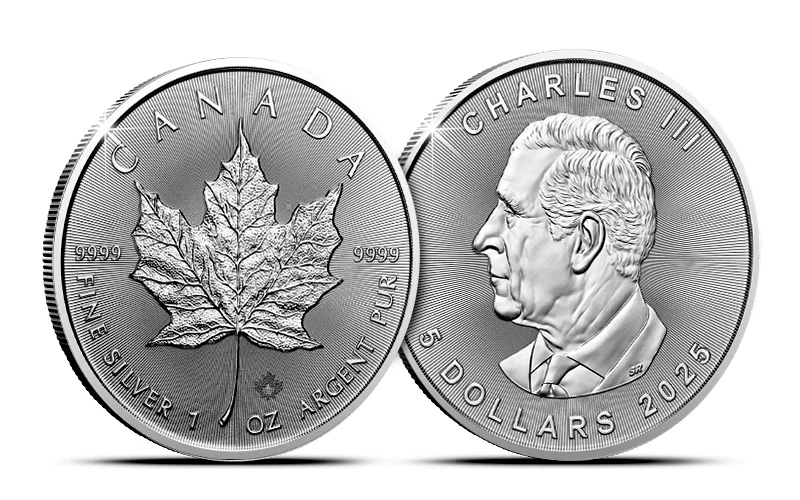
The Canadian Maple Leaf is renowned for its stunning design and intricate detailing. With the introduction of King Charles III’s portrait on the obverse for the first time, this coin gains historical significance, blending Canada’s strong ties to the British monarchy with its unique national identity.
3. FIRST King Charles III Australian Kangaroo
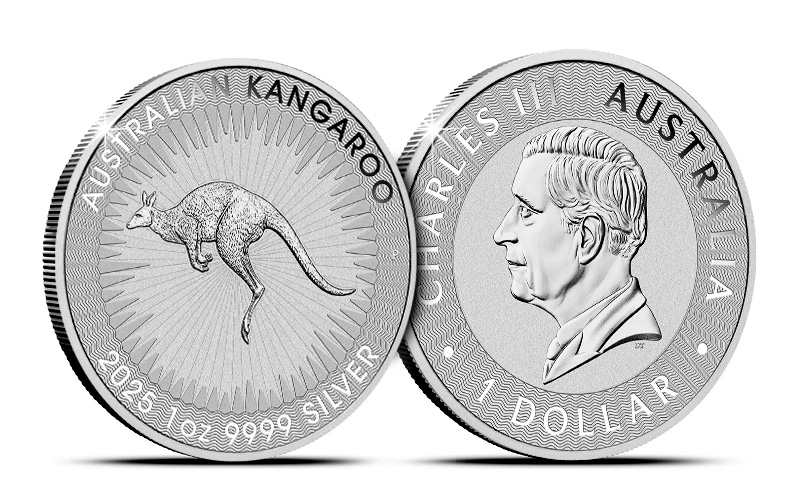
Australia’s beloved Kangaroo coin continues to leap forward in popularity. The 2025 edition features King Charles III on the obverse, marking its debut in this new era of numismatics. Its distinct design pays homage to Australia’s iconic wildlife.
4. American Eagle
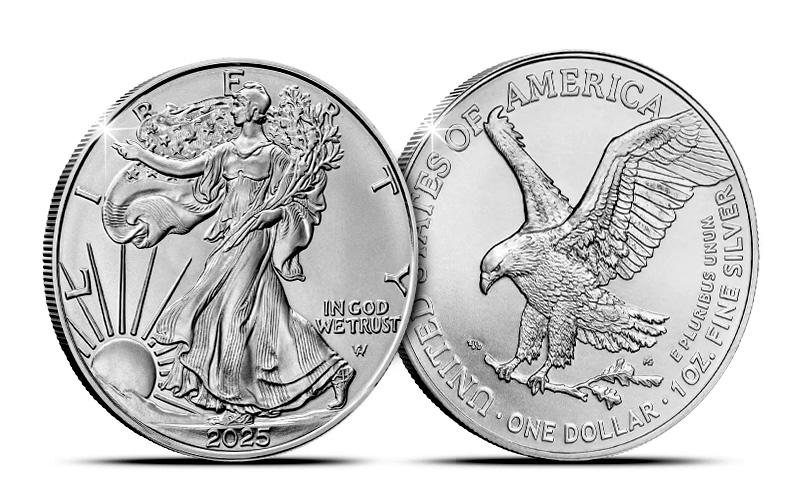
Often referred to as the most popular silver coin in the world, the American Eagle stands as the United States’ flagship bullion coin. The 2025 edition continues its legacy with the classic design that has captured the hearts of collectors worldwide.
5. Chinese Panda

The Chinese Panda is celebrated for its ever-changing designs, making each year’s release unique. In 2025, the Panda continues to capture the charm and spirited nature of China’s national treasure, offering collectors a truly distinctive addition to their collection.
6. South African Krugerrand
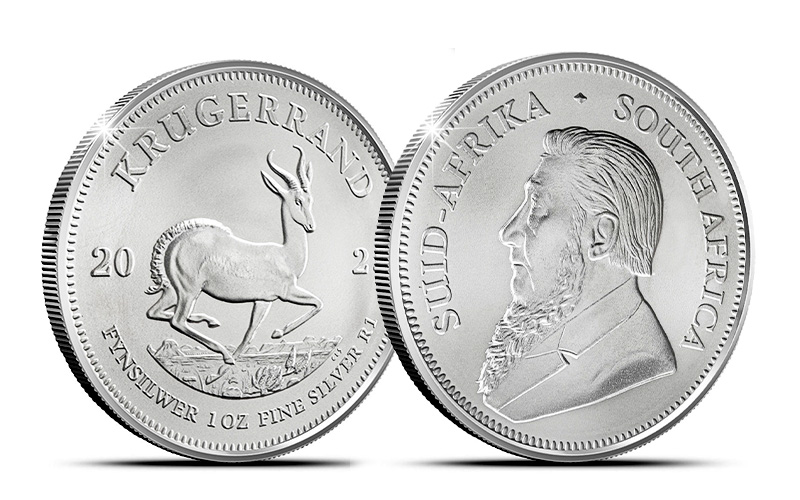
Introduced in silver in 2017, the Krugerrand has become an icon of South African numismatics. The 2025 edition maintains its reputation as a collector’s favorite, blending timeless design with global appeal.
Why Collectors Love the Silver Flagship Coins

Each coin in this collection tells a story of cultural pride and minting mastery. Together, they create a snapshot of the global numismatic landscape for 2025. With only a limited number of sets available, the 2025 Silver Flagship Coins of the World Collection offers an exclusive chance to own a piece of history.
HMS Belfast 2025 UK £2 Coin Range: A Tribute to Britain’s Most Formidable Warship

A legendary symbol of British naval strength has just been unveiled on an official UK £2 coin range for the very first time. The mighty HMS Belfast — a ship that played a decisive role in World War II, the Korean War, and the Cold War — now takes its place in coin-collecting history.
This release also makes history in more ways than one:
- The last new UK coin of the year — making it a landmark release to close out 2024.
- The first UK £2 coin to bear a 2025 date — a significant milestone for collectors.
These firsts, coupled with the ship’s rich history, make this coin one of the most important issues of the year.
The Legacy of HMS Belfast
Launched in 1938, HMS Belfast played a pivotal role in some of the most critical moments of the 20th century. As part of the Arctic convoys, she helped sink the German battleship Scharnhorst in 1943 — one of the Royal Navy’s greatest victories of WWII. The following year, she was a key player in the D-Day landings, bombarding German defences to support Allied troops at Sword Beach.
After WWII, she served in the Korean War and patrolled key locations during the Cold War, maintaining Britain’s naval dominance. Her final commission ended in 1963, and she was preserved as a museum ship on the River Thames. Today, HMS Belfast is a symbol of Britain’s naval heritage and a living memorial to the sailors who served aboard her.
The 2025 UK £2 Coin: A Collectible Like No Other

This striking coin depicts HMS Belfast as she appeared in the 1960s, accompanied by her Latin motto, “PRO · TANTO · QVID · RETRIBVAMVS” (What shall we give in return for so much?). Developed with the support of the Imperial War Museum (IWM), it offers collectors a chance to own a tangible link to this legendary warship.
Available in four stunning finishes — Gold Proof, Silver Proof Piedfort, Silver Proof, and Brilliant Uncirculated — each edition comes with informative packaging detailing HMS Belfast’s history and service record.
Why Collectors Will Want This Coin
- First-of-its-kind design – The first-ever UK coin dedicated to HMS Belfast.
- Commemorates naval heritage – A tribute to one of Britain’s most iconic warships.
- Limited availability – Early-release coins like this often sell out quickly.


This is more than a coin — it’s a tribute to the ship that played a decisive role in some of Britain’s greatest wartime victories.
Don’t miss your chance to secure the HMS Belfast 2025 UK £2 Coin and own a piece of naval history.

